

William Stopford
2025 Lexus NX350h Sports Luxury FWD review
19 Days Ago
The top-spec Haval Jolion certainly makes a case for itself, though the Chinese brand still has some kinks to iron out.
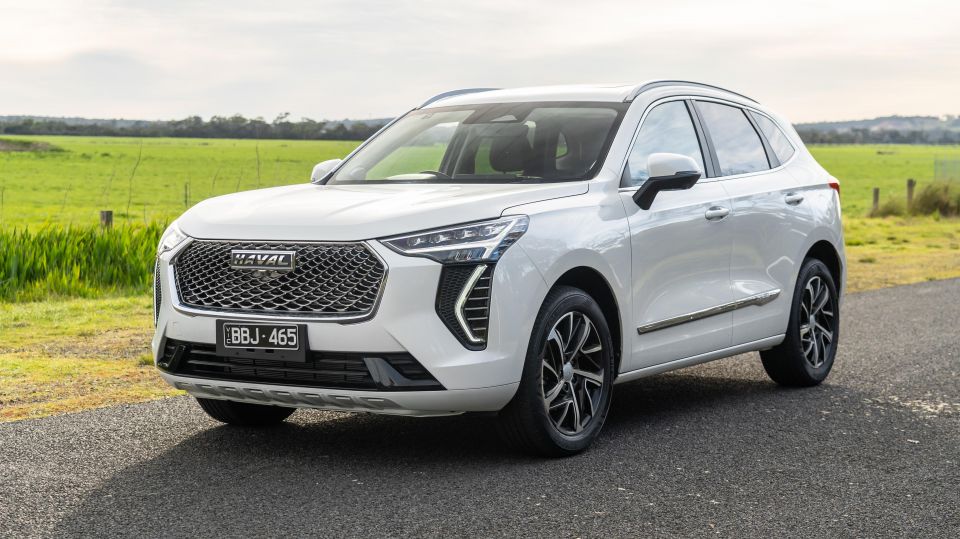
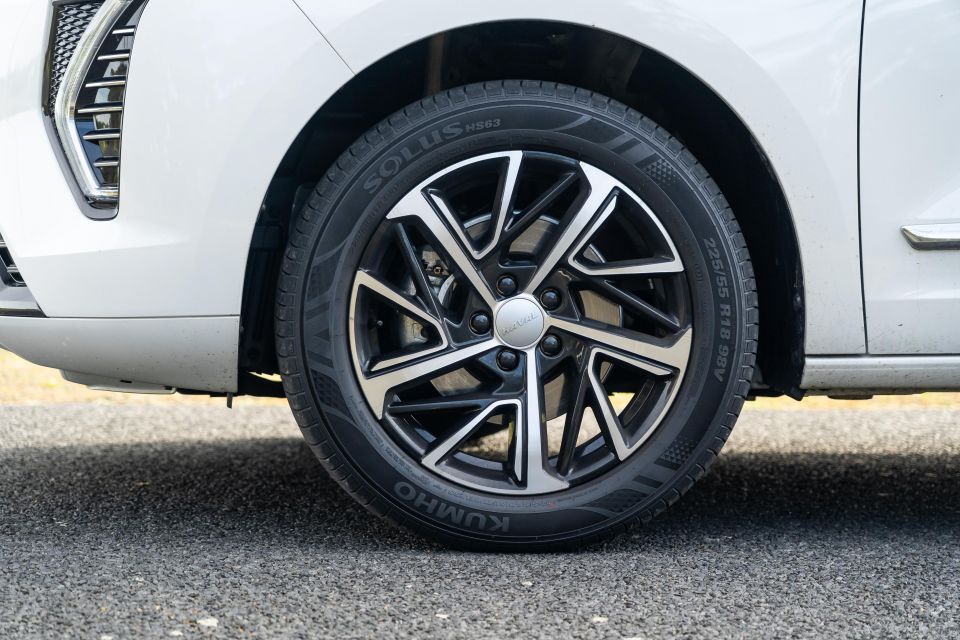

Marketplace Editor
New from
$24,592
excl. on-roads

Marketplace Editor
New from
$24,592
excl. on-roads


Marketplace Editor
New from
$24,592
excl. on-roads

Marketplace Editor
New from
$24,592
excl. on-roads
Quickly see how this car stacks up against its competition. Select any benchmark to see more details.
CarExpert helps new car buyers save thousands with expert reviews, honest advice, and transparent pricing – no dealer pressure and no sales games.
An H2 by any other name?
The Haval Jolion is looking to right the wrongs of its predecessor, so much so it even bears a different name.
Where the H2 backed its budget price with budget looks, the all-new Jolion is signalling the Chinese manufacturer’s all-out assault on the small SUV segment, with sharp looks and drive-away pricing relative to its competitors.
It’s also packed with features right from the base level, wears a blingy new design, and is one of the bigger vehicles in its segment.
One for the shortlist? Let’s find out.
On test we have the flagship Jolion Ultra, priced from $30,990 drive-away.
No matter how you look at it, it’s a bargain. Most of the Jolion’s competitors start at this price point before on-roads.
See the full price list below:
All prices are drive-away.

As noted above, the drive-away pricing for the top-spec Jolion undercuts the bulk of entry-level versions of rival nameplates.
Key competitors include:
All prices exclude on-road costs unless specified (D/A)
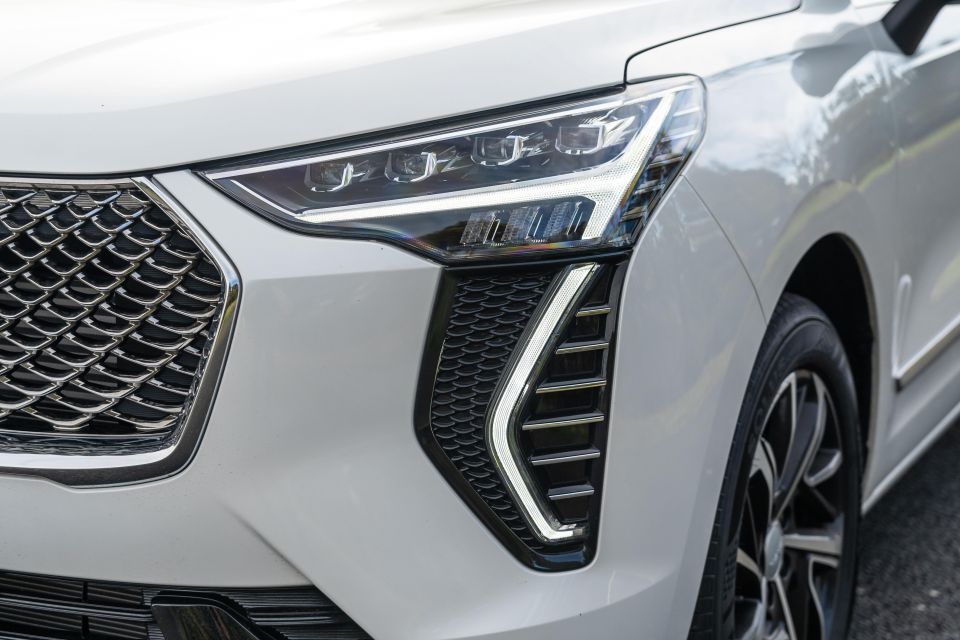

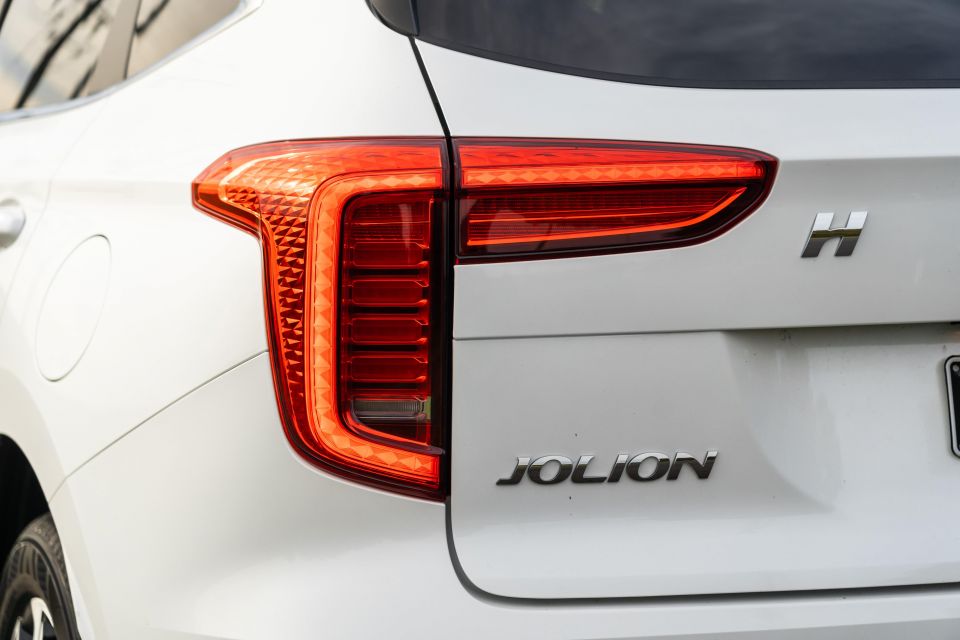
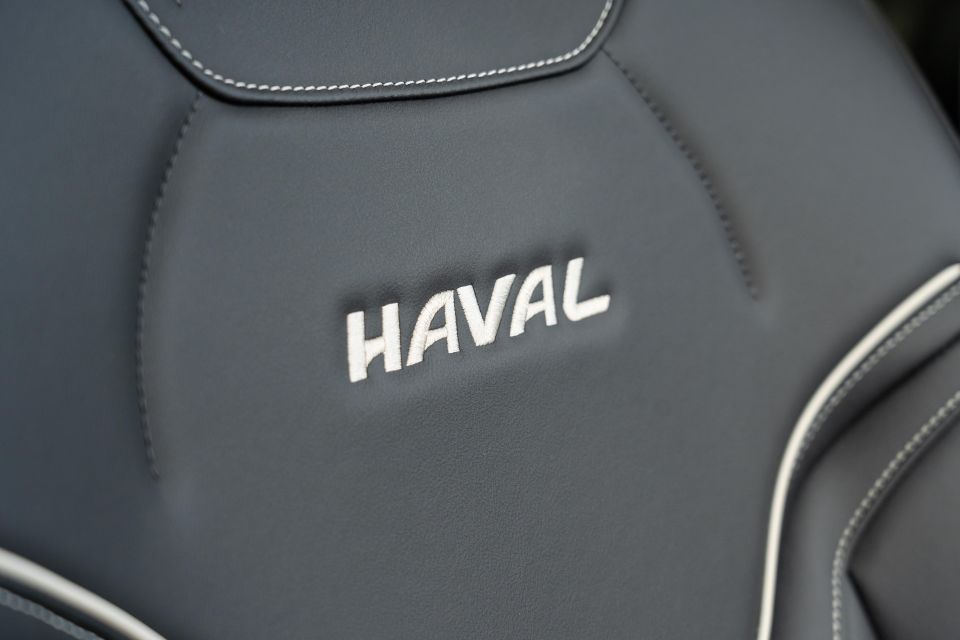
Equipment exclusive to the Ultra grade includes:
That’s on top of the specification carried over from lower grades:

The Haval Jolion hasn’t been crash tested by ANCAP or Euro NCAP yet.
Unlike its Haval H2 predecessor, however, it boasts a full suite of active safety features as standard.
Atop the front, front-side, curtain and front-centre airbags (seven in total), it offers:

GWM has clearly taken inspiration from a number of German luxury manufacturers, centring your attention around an array of screens and touch-capacitive controls.
In the Jolion Ultra you upgrade from the 10.25-inch central touchscreen in lesser models to a huge 12.3-inch display that’s easily one of, if not the largest in the class. Swish.
Ahead of the driver there’s also a 7.0-inch digital instrument display, which has several layouts including a sporty centre tacho dial or more futuristic, minimalist designs.
It’s a little tricky to navigate, though, at times needing you to be at a standstill to toggle menus and a not-so-obvious long hold of the ‘OK’ button to reach other menus like the trip computer.
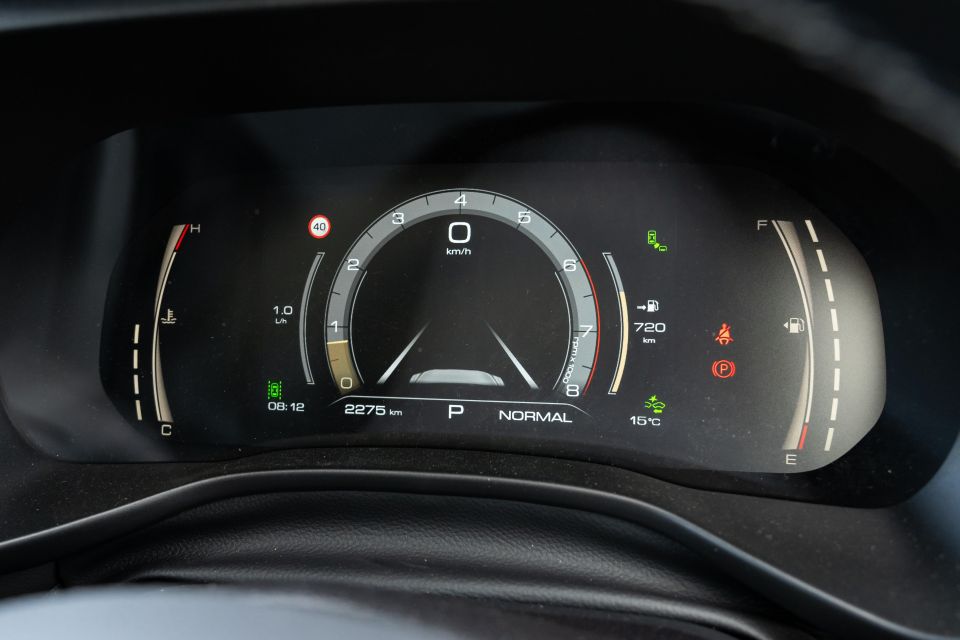
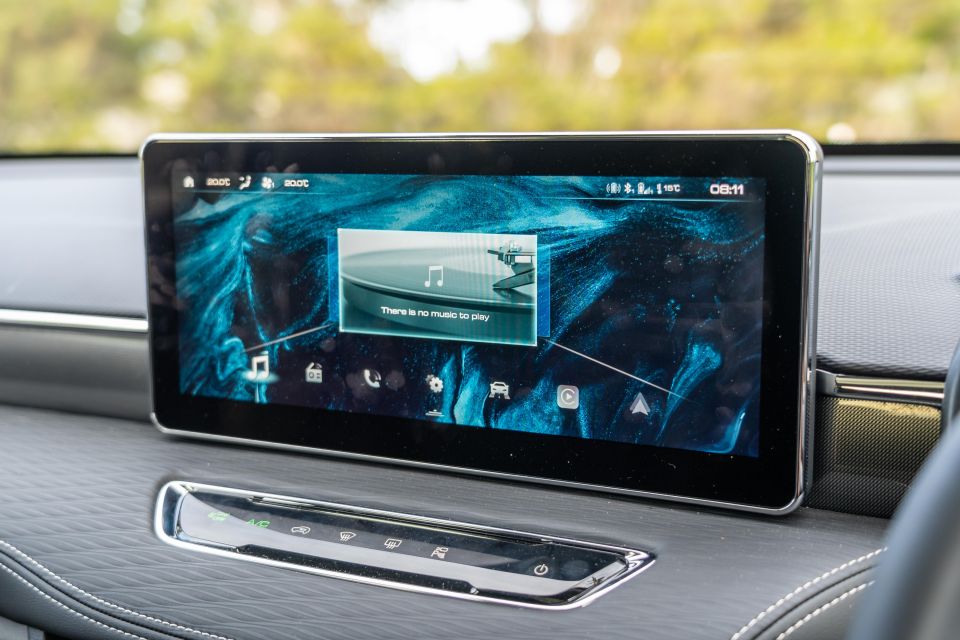
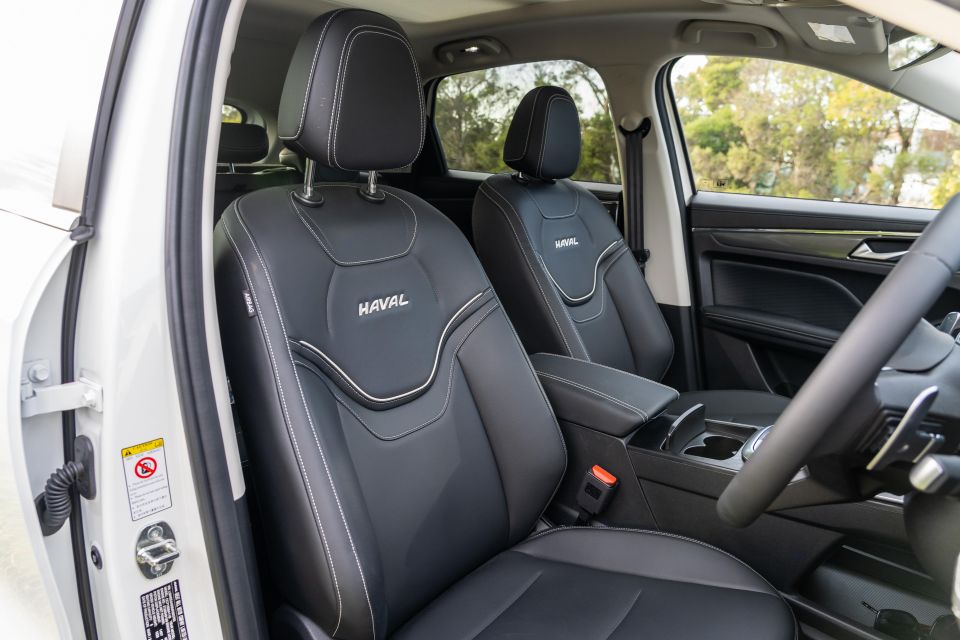
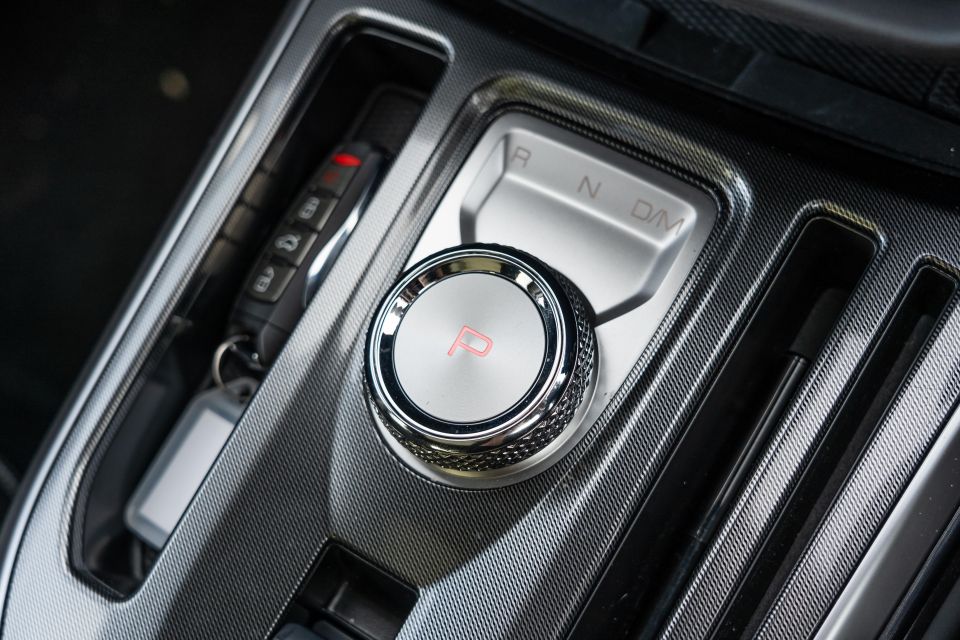
Annoyingly, the steering wheel doesn’t adjust for reach, even in this top-spec model. Further, while the front seats are electrically-adjustable, the seat base angle cannot be adjusted and is lacking a little in under-thigh support.
Otherwise, it presents well and feels much more upmarket than the price would suggest. The touch points are padded, screen resolutions are clear and the general design and layout looks fresh.
Poke and prod a little more and you can see where some money as been saved.
The upper sections of the dash and door tops are finished in hard plastics that have been moulded to imitate stitching. It’s just, ew.
Some of the switchgear on the steering wheel doesn’t feel particularly flash either, but hey, it’s a bloody affordable car to begin with.
There’s a real feeling of space in both rows of seating, and up front you feel like you’re in control of a much larger, more substantial vehicle, in a good way.
Storage is pretty good up front too, with two cup holders (in different sizes), a wireless phone charging pad, a hidden cubby under the centre console, decent bins in the doors, and a cubby under the padded front-centre armrest.


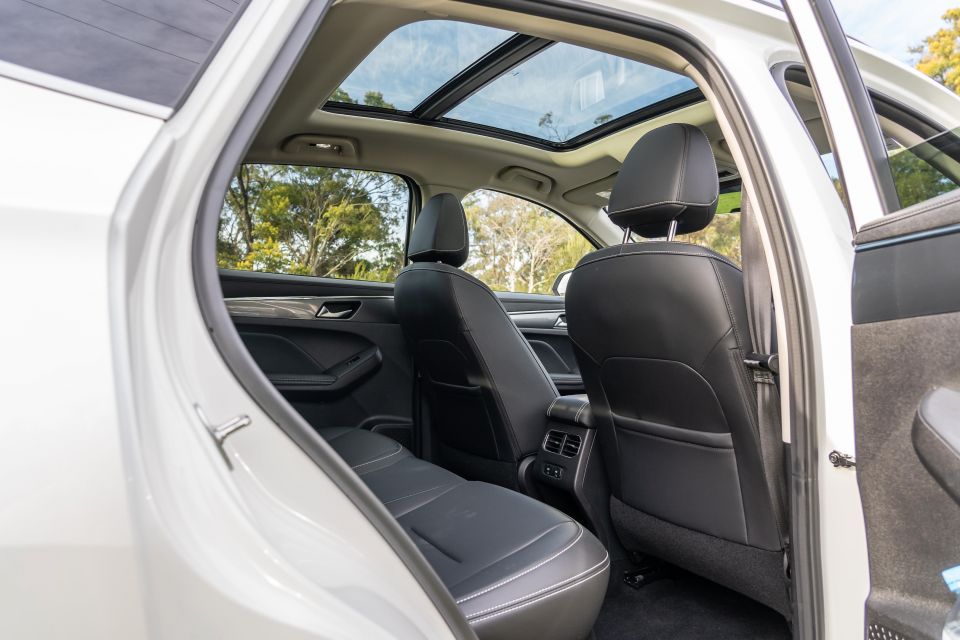
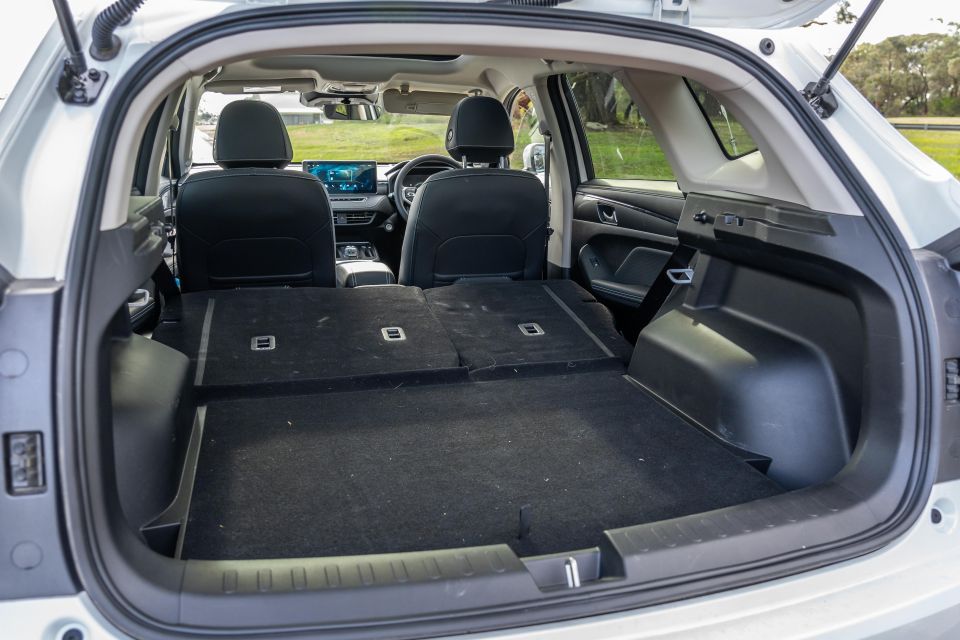
Where the Jolion impresses most is rear-seat space, likely down to the Chinese market’s obsession with second-row legroom.
At around 6’1 I can easily fit behind my own driving position, with more than enough head, leg and shoulder room for a larger adult. There’s directional rear air vents as well – not a given in this part of the market – as well as two USB charging ports to keep mobile devices topped up.
Rounding out the second-row amenities are map pockets behind both front seats as well as bottle holders in the doors. It certainly covers more bases than a lot of competitors, be it in size and price point.
Further back the Jolion offers a handy 430L boot which expands to 1133L with the second row folded. It’s worth noting that the floor is a little high-set, but it’s otherwise a nice and square area to stow whatever life might throw at you.
Under the boot floor, there’s a space-saver spare wheel.
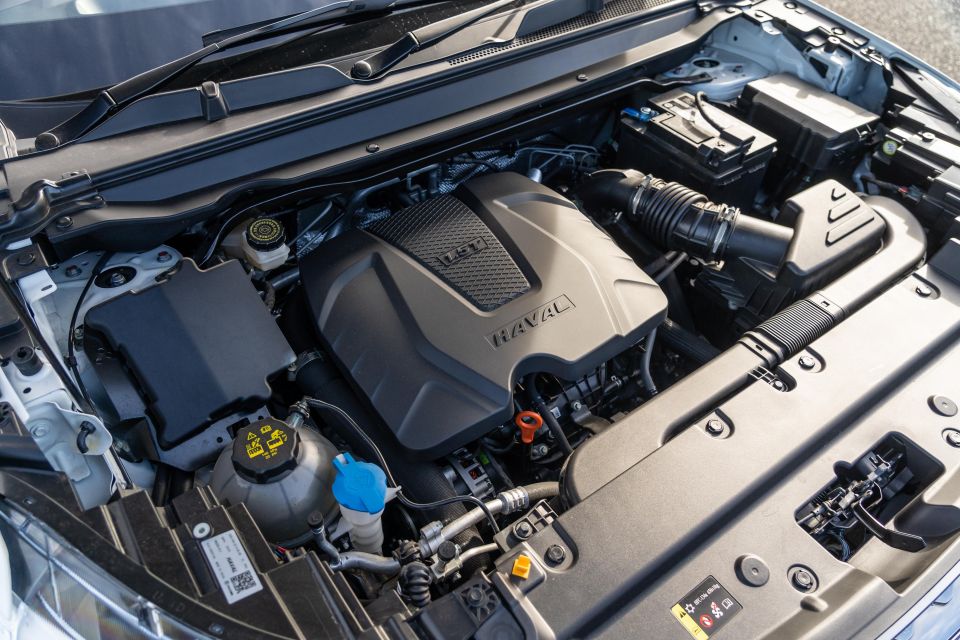
Power in all versions of the Haval Jolion comes from a 1.5-litre turbocharged four-cylinder petrol engine, driving the front wheels via a seven-speed dual-clutch automatic transmission.
Outputs are quoted at 110kW (5600-6000rpm) and 220Nm (2000-4400rpm), while combined fuel consumption is rated at 8.1L/100km on the combined cycle.
Breaking down the fuel use figures further, Haval claims an urban cycle figure of 10.4L/100km – keeping in mind this is where the vehicle will spend the bulk of its time – and a highway claim of 6.7L/100km.
The Jolion can run on regular 91 RON unleaded, however, and there’s no idle stop/start system either – something that tends to be a contentious topic in the comments section on CarExpert.
Looking to tow? Haval quotes a maximum braked towing capacity of 1500kg.
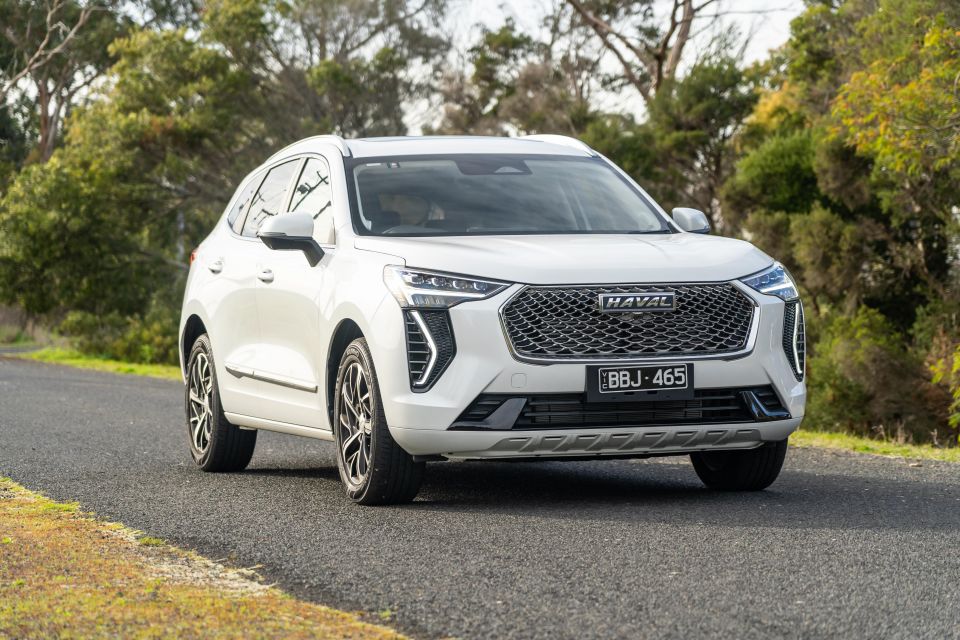
If you’re expecting the little Haval to fall apart once you get moving, think again.
From the moment I fired it up and hit the road, I was pleasantly surprised with the maturity and refinement the Jolion exhibits.
The 1.5L turbo and DCT are leaps and bounds ahead of similar setups in previous-generation GWM Haval product, and has enough oomph to get the Jolion moving without feeling lethargic or laboured.
I will, however, note the DCT’s quibbles at low speeds particularly when setting off, at times feeling slow to engage forward and fumbling the change from first into second causing a jolt-like sensation.
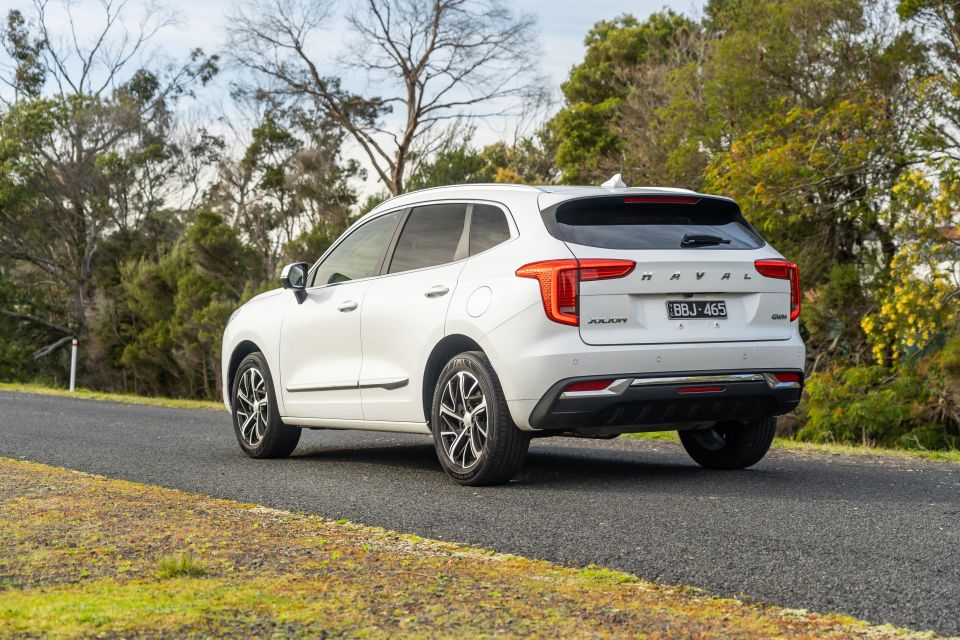
Should you frequent a lot of stop/start traffic you’ll need to adjust your throttle inputs to avoid the bunny-hopping feeling, and with a more measured and progressive approach to the accelerator pedal I felt I figured it out.
The light steering is direct in feel if a little lacking in feedback. So, it’s pretty easy to place and park but it’s not going to be billed as a ‘driver’s car’ like a Ford Puma.
It’s got a pretty well-sorted ride, too. The Jolion rides on a smaller version of the company’s latest architecture shared with the larger H6 – so it feels like a shrunken version of a smaller car rather than a swollen version of a smaller one.
While Haval dubs the platform as LEMON (Lightweight, Electrification, Multi-purpose, Omni-protection and Network), the Jolion feels planted and confident regardless of speed, while also feeling keen and nimble when things get twisty.
That’s even with a less-sophisticated torsion-beam rear suspension setup, though the more basic rear axle system is pretty standard at this end of the market.
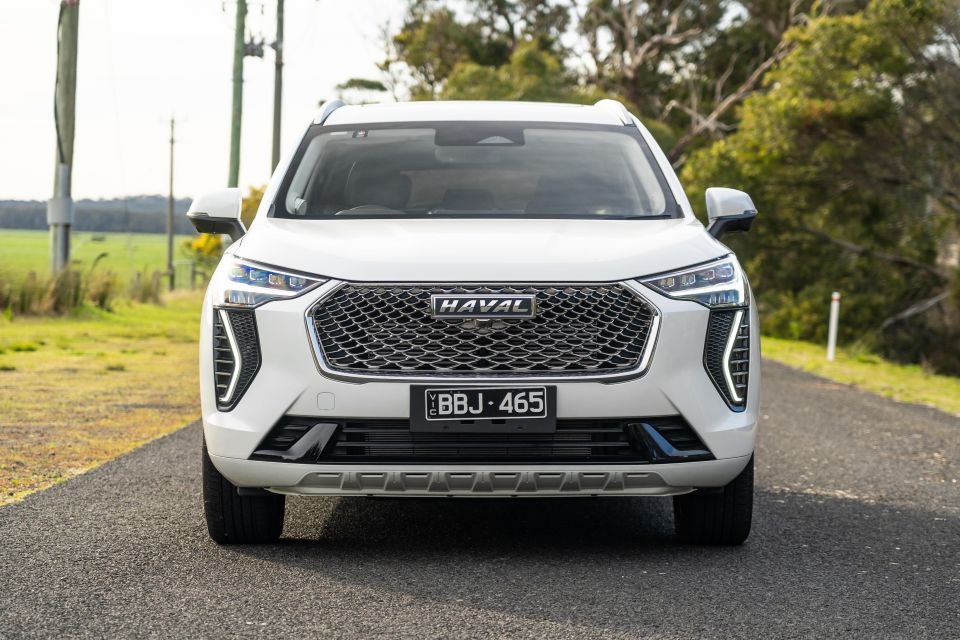
Cabin refinement at all speeds is again surprisingly good, with road and wind noise kept at below average levels – I drove it over some pretty crappy blacktop too.
What let the Jolion down were the driver assistance systems, particularly the lane-keep and adaptive cruise technologies. It’s here where the Haval feels a decent step behind better-known competition, particularly those hailing from Europe and South Korea.
The adaptive cruise control and assist functions work fine when there’s no other cars on a straight road. However, there were only two distance settings available both of which were far too conservative and would cause issues in heavier traffic on the highway.
Likewise the lane-keep assist function would go between overzealous and too relaxed, and then also at times violently brake when using the adaptive cruise when anticipating a corner. It’s not often I choose to take over these systems on long journeys, but I felt I had to numerous times with the Jolion.
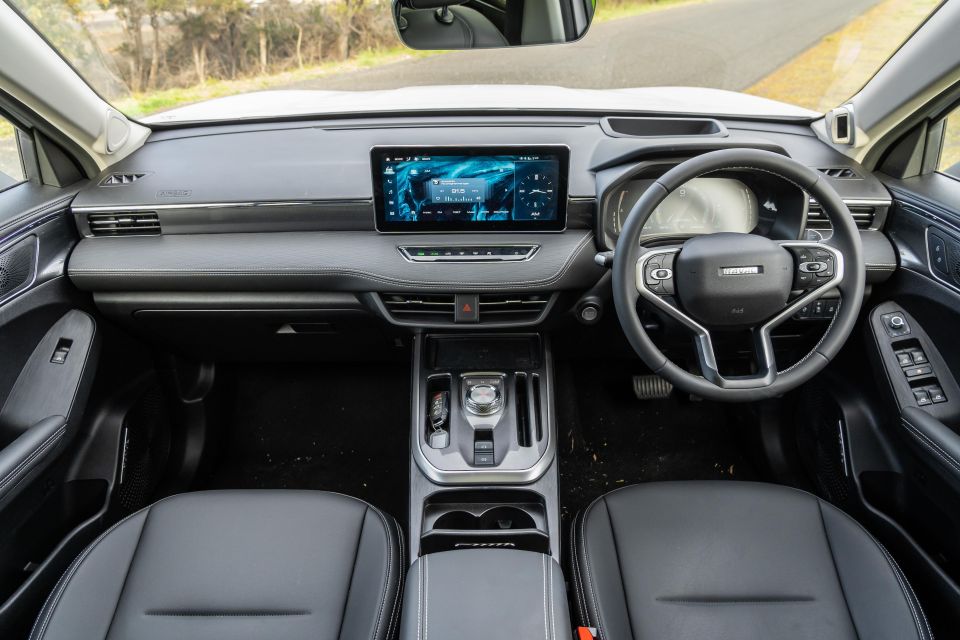
Like the wider GWM Haval line-up, the Jolion is covered by a seven-year, unlimited-kilometre warranty with complimentary roadside assistance for five years/100,000km.
Further, there’s a five-year capped-price servicing plan covering up to 70,000 kilometres. There’s a 10,000km gap for the first interval, with 15,000km between visits from thereafter.
In order, those five services cost $210, $250, $350, $450 and $290 – totalling $1250. While not quite Toyota cheap (C-HR 1.2T is $220 a pop for five years), the Jolion is one of the most affordable small SUVs to maintain.
As for fuel consumption, the company claims an official combined figure of 8.1L/100km which is easily on the higher side of the segment. We saw 7.2L/100km (indicated) during a week of mostly highway driving, and you can run it on 91 RON regular unleaded.

The 2022 Haval Jolion Ultra shows more than ever the Chinese brands are no laughing matter.
In top-spec guise GWM’s smallest SUV is handsome, well-rounded in terms of features and on-road refinement, and genuinely can handle four adults in comfort.
It’s also well-covered from a warranty and servicing perspective, and wears a super sharp drive-away price tag that undercuts even base versions of key competitors.
With that said, it could use another layer of polish in the areas of low-speed driveability, infotainment and driver-assistance technologies, and it’s a little thirsty compared to rival models.
Still, not a bad effort.
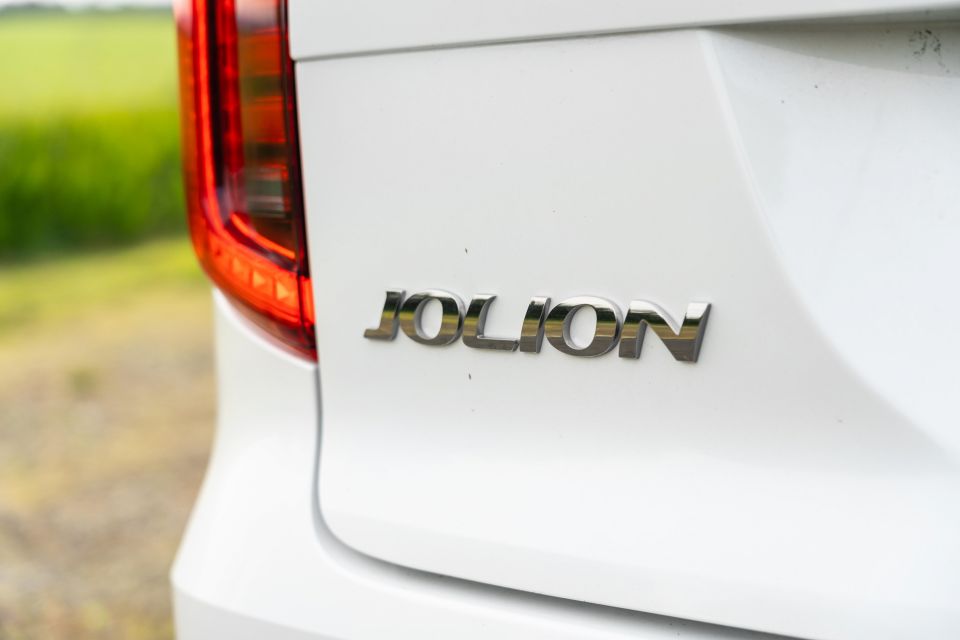
CarExpert helps new car buyers save thousands with expert reviews, honest advice, and transparent pricing – no dealer pressure and no sales games.
Click the images for the full gallery
MORE: Everything Haval Jolion
CarExpert helps new car buyers save thousands with expert reviews, honest advice, and transparent pricing – no dealer pressure and no sales games.
Discover and compare similar models
James is an automotive journalist based in Melbourne, Australia. Before joining CarExpert.com.au in 2020, James has worked at leading auto media outlets including Carsales and CarAdvice, as well as at Pulse agency for Ford Australia's communications team. In 2019 James made Mumbrella's 'Top 20 most prolific web authors in Australia' list after publishing 1,360 articles between March 1, 2018 and February 28, 2019 for CarAdvice. James is also an Ambassador for Drive Against Depression – an Australian charity whose mission is to support mental wellness through the freedom of driving and a shared love of cars.


William Stopford
19 Days Ago


Andrew Maclean
17 Days Ago


Josh Nevett
14 Days Ago


Andrew Maclean
10 Days Ago
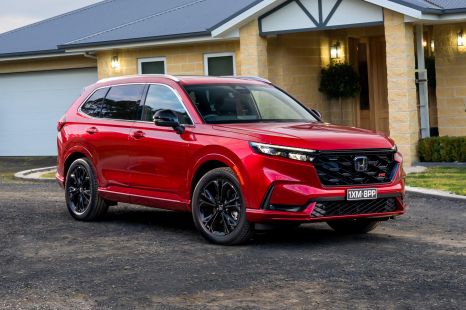

Damion Smy
8 Days Ago
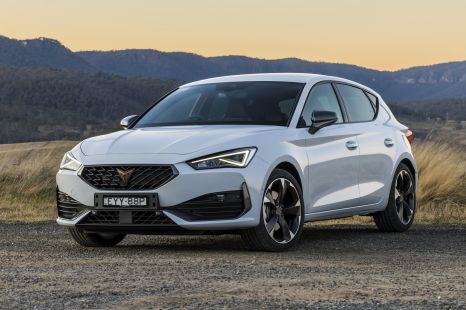

James Wong
8 Days Ago